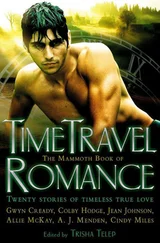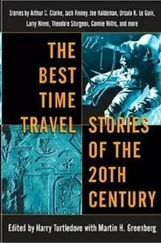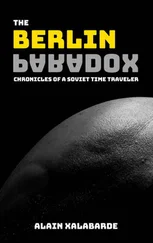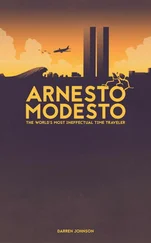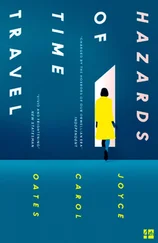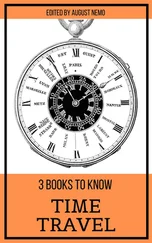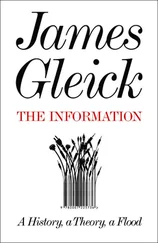James Gleick - Time Travel
Здесь есть возможность читать онлайн «James Gleick - Time Travel» — ознакомительный отрывок электронной книги совершенно бесплатно, а после прочтения отрывка купить полную версию. В некоторых случаях можно слушать аудио, скачать через торрент в формате fb2 и присутствует краткое содержание. Год выпуска: 2016, Издательство: Knopf Doubleday Publishing Group, Жанр: Старинная литература, на английском языке. Описание произведения, (предисловие) а так же отзывы посетителей доступны на портале библиотеки ЛибКат.
- Название:Time Travel
- Автор:
- Издательство:Knopf Doubleday Publishing Group
- Жанр:
- Год:2016
- ISBN:нет данных
- Рейтинг книги:5 / 5. Голосов: 1
-
Избранное:Добавить в избранное
- Отзывы:
-
Ваша оценка:
- 100
- 1
- 2
- 3
- 4
- 5
Time Travel: краткое содержание, описание и аннотация
Предлагаем к чтению аннотацию, описание, краткое содержание или предисловие (зависит от того, что написал сам автор книги «Time Travel»). Если вы не нашли необходимую информацию о книге — напишите в комментариях, мы постараемся отыскать её.
Time Travel — читать онлайн ознакомительный отрывок
Ниже представлен текст книги, разбитый по страницам. Система сохранения места последней прочитанной страницы, позволяет с удобством читать онлайн бесплатно книгу «Time Travel», без необходимости каждый раз заново искать на чём Вы остановились. Поставьте закладку, и сможете в любой момент перейти на страницу, на которой закончили чтение.
Интервал:
Закладка:
The problem of how to communicate with faraway creatures, physiognomy and language unknown, continues to receive scholarly attention. It arose again when people started sending messages into deep space, in capsules like the Voyager 1 and 2 , launched from Cape Canaveral in 1977. These vehicles are space travelers and time travelers, too, their progress measured in light-years. They each bear a copy of the Golden Record, a twelve-inch disk engraved with analog data via the technology, now obsolete, known as “phonograph” (1877–ca. 1987). There are several dozen encoded photographs as well as Sounds of Earth, selected by Carl Sagan and his team and meant to be played at 16⅔ rpm. Just as the Westinghouse time capsule lacked space for a microfilm reader, the Voyager spacecraft could not carry a phonograph record player, but a stylus was thrown in, and the disk is engraved with instructional diagrams. The same conundrum occurs in the context of nuclear-waste disposal: Can we design warning messages to be understood thousands of years hence? Peter C. van Wyck, a communications expert in Canada, described the problem this way: “There is always a kind of tacit assumption that a sign can be made such that it contains instructions for its own interpretation—a film showing how to use a film projector, a map of the mouth to demonstrate pronunciation, recorded instructions for how to assemble and use a stylus and a turntable.” If they can figure it all out—decode the information engraved as microscopic waves in a single long spiral groove on a metal disk a half millimeter thick—they will find diagrams of DNA structure and cell division, photographs of anatomy numbered 1–8 from The World Book Encyclopedia, human sex organs and a diagram of conception, and an Ansel Adams photograph of the Snake River in Wyoming, and they may “hear” greetings spoken in fifty-five languages ( “shalom”; “bonjour tout le monde”; “namaste” ), sounds of crickets and thunder, a sample of Morse code, and musical selections such as a Bach prelude played by Glenn Gould and a Bulgarian folk song *6sung by Valya Balkanska. That, anyway, is one message sent to deep space and to the far future.
—
WHEN PEOPLE MAKE time capsules, they disregard a vital fact of human history. Over the millennia—slowly at first and then with gathering speed—we have evolved a collective methodology for saving information about our lives and times and transmitting that information into the future. We call it, for short, culture.
First came songs, clay pots, drawings on cave walls. Then tablets and scrolls, paintings and books. Knots in alpaca threads, recording Incan calendar data and tax receipts. These are external memory, extensions of our biological selves. Mental prostheses. Then came repositories for the preservation of these items: libraries, monasteries, museums; also theater troupes and orchestras. They may consider their mission to be entertainment or spiritual practice or the celebration of beauty, but meanwhile they transmit our symbolic memory across the generations. We can recognize these institutions of culture as distributed storage and retrieval systems. The machinery is unreliable—disorganized and discontinuous, prone to failures and omissions. They use code. They require deciphering. Then again, whether made of stone, paper, or silicon, the technology of culture has a durability that the biological originals can only dream of. This is how we tell our descendants who we were. By contrast, the recent smattering of time capsules is an oddball sideshow.
The capsulists consider it naïve to rely on such perilous and transient human institutions as museums and libraries—all the more so in our era of chips and clouds. What good will Wikipedia be when the lights go out, or even the Metropolitan Museum of Art? They believe they are taking the long view. Civilizations rise and fall, with an emphasis on fall. From the Bronze Age cultures of the Minoans and the Mycenaeans to the modern civilization in which we live, there was no direct influence—no continuity and no collective memory. These are islands in the ocean of time. So we rely on arrowheads and bones and broken pots found in burial pits. They built their palaces, painted their frescoes, and vanished into obscurity. The darkness drops again. We dig up their remains, but the bits uncovered by archeologists are the accidental bits. In Pompeii it took a cataclysm to freeze vivid tragic tableaus of daily life for our future appreciation. The makers of time capsules prefer not to wait for the sky to pour down ash and pumice.
With the passing millennia, though, humans have developed into something different from the amnesiac creatures who formed those scattered, preliterate settlements. We are well connected information pack rats. Far more mementoes are preserved in museums than in cornerstones. Still more are looked after by coin collectors and random hoarders. The garages of antique automobile collectors are more effective preservers of old cars than buried concrete vaults. Toys? Bottles of old beer? There are specialty museums just for those.
As for knowledge itself, that is our stock in trade. When the Library of Alexandria burned, it was one of a kind. Now there are hundreds of thousands, and they are crammed to overflowing. We have developed a species memory. We leave our marks everywhere. The apocalypse may come—our complacent technocracy foundering amid pandemic or nuclear holocaust or the self-inflicted blighting of the global ecosystem—and when it does, our ruins will be prodigious.
When people fill time capsules they are trying to stop the clock—take stock, freeze the now, arrest the incessant head-over-heels stampede into the future. The past appears fixed, but memory, the fact of it, or the process, is always in motion. That applies to our prosthetic global memory as well as the biological version. When the Library of Congress promises to archive every tweet, does it create a Borgesian paradox in real time or a giant burial chamber in progress?
—
“BUT IT IS only in ashes that a story endures,” wrote the Genovese poet Eugenio Montale. “Nothing persists except extinguished things.” When the archeologists of the future come to read our legacy in the proverbial ash heap of history, they will not look to the basement crypt at Oglethorpe University or the time capsule buried in the mud of the former Flushing, Queens. Anyway we will be rewriting that legacy till the bitter end. Stanisław Lem imagined this vividly in his postapocalyptic comic novel Memoirs Found in a Bathtub, published in Poland in 1961. The bathtub serves as yet another time capsule. It is marble, “like a sarcophagus,” in an intricate complex of corridors (designed by Kafka, evidently) deep underground. *7It is buried, more or less apocalyptically, and a millennium or so later it is excavated by archeologists of the future. In it they find a pair of human skeletons and a handwritten manuscript: “a voice speaking to us across the abyss of centuries, a voice belonging to one of the last inhabitants of the lost land of Ammer-Ka.”
A faux-scholarly introduction by these future archeologists (or “histognostors”) explains the situation. Everyone knows about that turning point in Earth’s history called the Great Collapse: “that catastrophic event which in a matter of weeks totally demolished the cultural achievement of centuries.” What triggered this Great Collapse was a chemical chain reaction that caused the near-instantaneous disintegration, worldwide, of the peculiar material—“whitish, flaccid, a derivative of cellulose, rolled out on cylinders and cut into rectangular sheets”—called “papyr.” Papyr was almost the sole means of recording knowledge: “information of all kinds was impressed on it with a dark tint.” Of course nowadays (the histognostors remind their readers) we have metamnestics and data crystallization, but those modern techniques were unknown to this primitive civilization.
Читать дальшеИнтервал:
Закладка:
Похожие книги на «Time Travel»
Представляем Вашему вниманию похожие книги на «Time Travel» списком для выбора. Мы отобрали схожую по названию и смыслу литературу в надежде предоставить читателям больше вариантов отыскать новые, интересные, ещё непрочитанные произведения.
Обсуждение, отзывы о книге «Time Travel» и просто собственные мнения читателей. Оставьте ваши комментарии, напишите, что Вы думаете о произведении, его смысле или главных героях. Укажите что конкретно понравилось, а что нет, и почему Вы так считаете.


